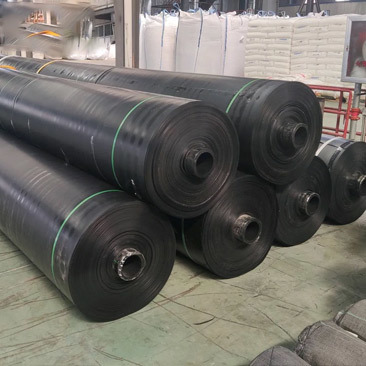Understanding Geomembrane Material: A Key Component in Construction and Environmental Protection
Release time:
2025-09-17
Geomembrane materials are crucial components in the construction industry, particularly in civil engineering and environmental projects. They are synthetic membranes that serve as barriers to prevent the migration of fluids and gases in various applications, including landfill linings, water reservoirs, and canal systems. Their unique properties make them an indispensable choice for a multitude of
Geomembrane materials are crucial components in the construction industry, particularly in civil engineering and environmental projects. They are synthetic membranes that serve as barriers to prevent the migration of fluids and gases in various applications, including landfill linings, water reservoirs, and canal systems. Their unique properties make them an indispensable choice for a multitude of construction and environmental protection scenarios.
One of the primary characteristics of geomembrane materials is their impermeability. Made from high-density polyethylene (HDPE), linear low-density polyethylene (LLDPE), or polyvinyl chloride (PVC), these materials are designed to minimize fluid movement, making them ideal for waste containment and water management systems. Their durability and resistance to chemical exposure also contribute to their effectiveness in harsh environmental conditions.
In construction, geomembrane materials play a vital role in mitigating risks associated with groundwater contamination. By acting as a barrier, they prevent leachate from landfills or hazardous materials from migrating into the soil and groundwater systems. This protective function is particularly important in urban areas where the risk of contamination is higher due to densely populated regions and infrastructure development.
There are several types of geomembranes, each tailored for specific applications. For instance, HDPE geomembranes are widely used because of their strength and flexibility, making them suitable for a variety of projects, including ponds, lakes, and landfill liners. Meanwhile, LLDPE geomembranes offer excellent elongation properties, making them ideal for applications requiring high puncture resistance. PVC geomembranes, on the other hand, are often chosen for their ease of installation and versatility.
The installation of geomembrane materials requires careful planning and execution to ensure optimal performance. Proper installation techniques, including welding and sealing, are critical to maintaining the integrity of the geomembrane and achieving its intended protective function. Furthermore, regular inspections and maintenance are essential to address any wear or damage that may occur over time.
In conclusion, geomembrane materials are an integral part of modern construction and environmental management strategies. Their versatility, durability, and protective qualities make them an excellent choice for a wide range of applications, ensuring safe and efficient management of resources. Understanding the different types of geomembranes and their specific uses can significantly enhance project outcomes and contribute to sustainable practices in construction and environmental protection.
One of the primary characteristics of geomembrane materials is their impermeability. Made from high-density polyethylene (HDPE), linear low-density polyethylene (LLDPE), or polyvinyl chloride (PVC), these materials are designed to minimize fluid movement, making them ideal for waste containment and water management systems. Their durability and resistance to chemical exposure also contribute to their effectiveness in harsh environmental conditions.
In construction, geomembrane materials play a vital role in mitigating risks associated with groundwater contamination. By acting as a barrier, they prevent leachate from landfills or hazardous materials from migrating into the soil and groundwater systems. This protective function is particularly important in urban areas where the risk of contamination is higher due to densely populated regions and infrastructure development.
There are several types of geomembranes, each tailored for specific applications. For instance, HDPE geomembranes are widely used because of their strength and flexibility, making them suitable for a variety of projects, including ponds, lakes, and landfill liners. Meanwhile, LLDPE geomembranes offer excellent elongation properties, making them ideal for applications requiring high puncture resistance. PVC geomembranes, on the other hand, are often chosen for their ease of installation and versatility.
The installation of geomembrane materials requires careful planning and execution to ensure optimal performance. Proper installation techniques, including welding and sealing, are critical to maintaining the integrity of the geomembrane and achieving its intended protective function. Furthermore, regular inspections and maintenance are essential to address any wear or damage that may occur over time.
In conclusion, geomembrane materials are an integral part of modern construction and environmental management strategies. Their versatility, durability, and protective qualities make them an excellent choice for a wide range of applications, ensuring safe and efficient management of resources. Understanding the different types of geomembranes and their specific uses can significantly enhance project outcomes and contribute to sustainable practices in construction and environmental protection.






